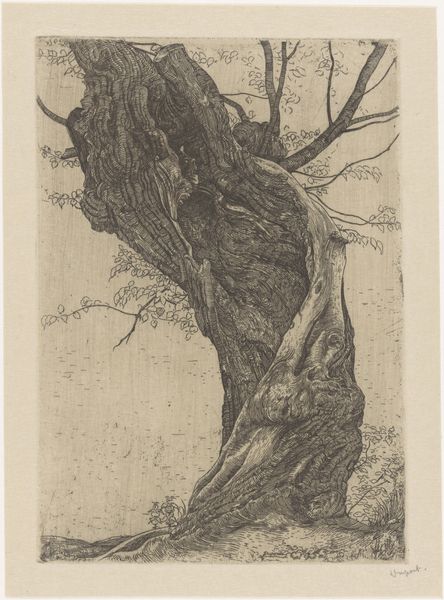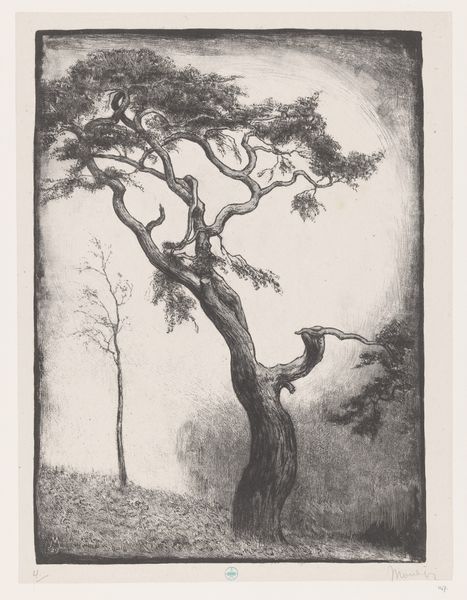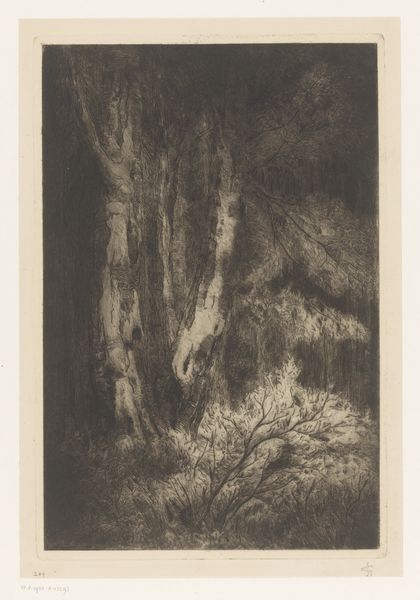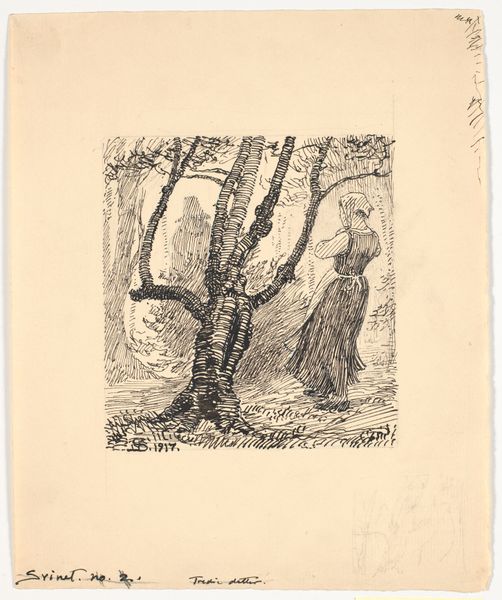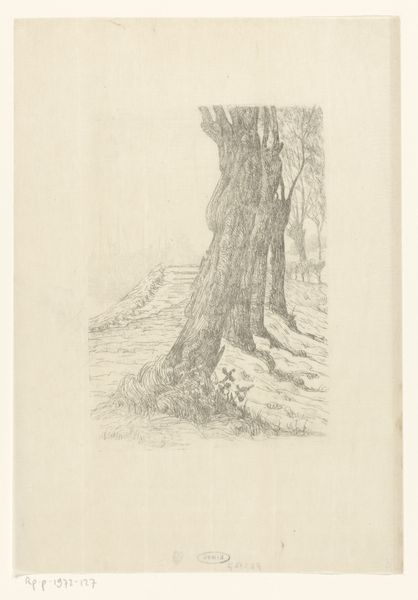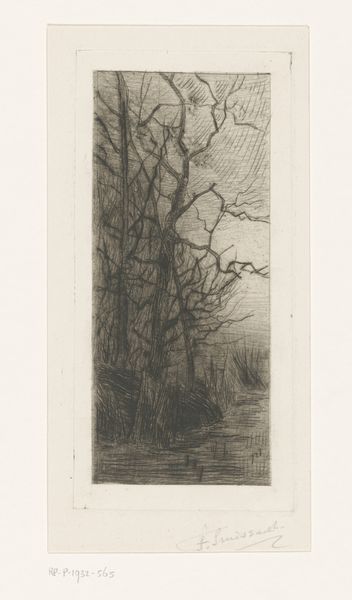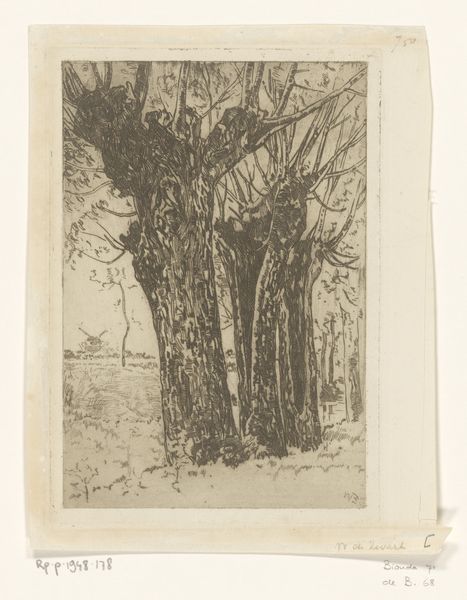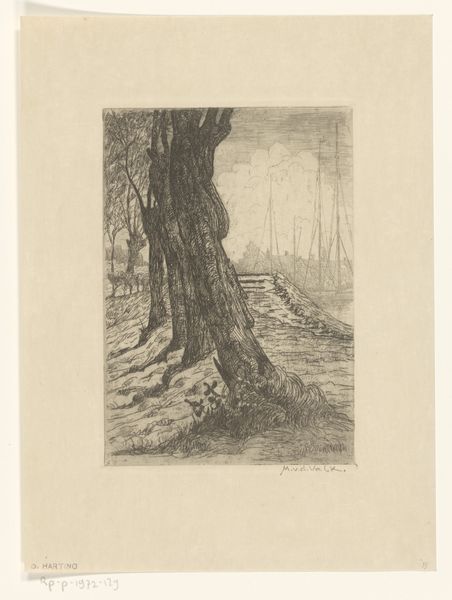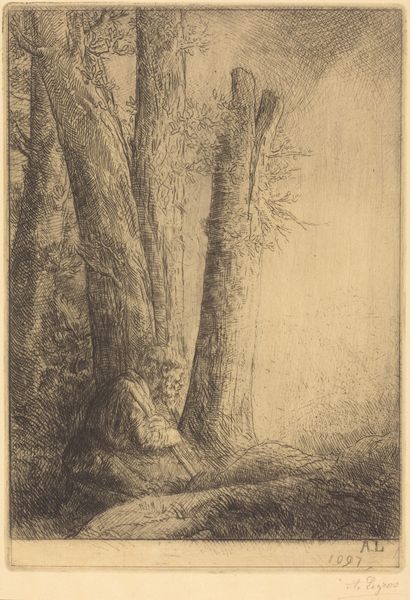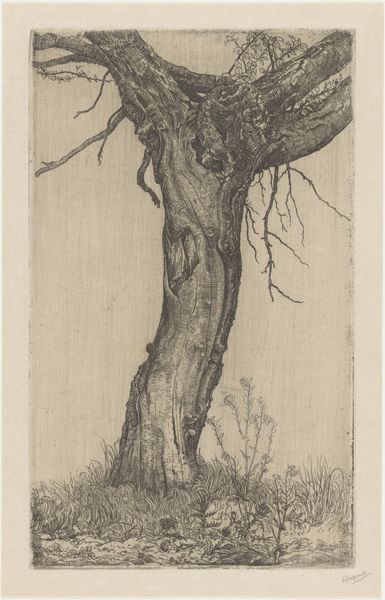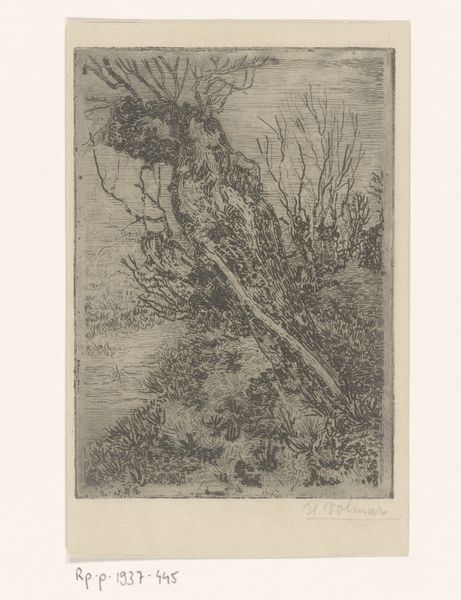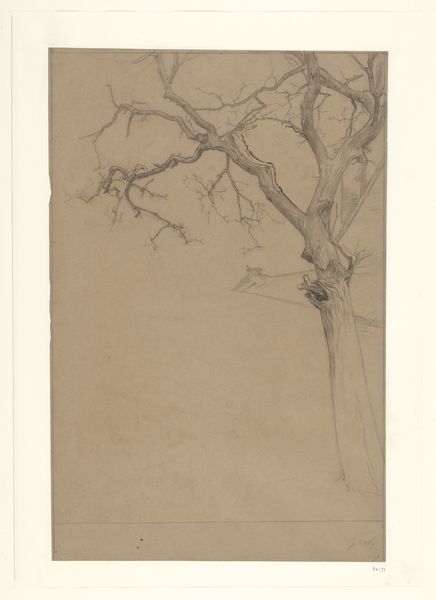
Dimensions: 536 × 381 mm (image); 554 × 390 mm (plate); 697 × 516 mm (sheet)
Copyright: Public Domain
Curator: What strikes me immediately about this etching is the bleakness, the palpable despair emanating from the scene. The figure seems utterly defeated. Editor: Indeed. This is Alphonse Legros' "Death of the Vagabond," created in 1879. Legros, rooted in Realism, had an acute sensitivity to the plight of the working class, evident in his drawings, prints, and paintings. Here we see the social realities laid bare, absent of romantic idealization. Curator: It really does convey a strong sense of the weight of the world on the subject's shoulders, doesn’t it? I’m drawn to the raw emotionality of the piece, which speaks volumes about social and economic disenfranchisement of late 19th-century Europe. How might Legros' etching techniques relate to these themes? Editor: The medium itself, etching, is crucial. The line work, created through painstaking process of biting into metal, mirrors the harsh realities endured by the vagabond. Etching allowed for multiple copies. Legros aimed to bring this scene of poverty and abandonment to a larger public, urging them to contemplate their role in society and its structures of labor. It makes us think about access and the very act of observation as something with political potential. Curator: It’s also intriguing to consider the composition choices. Note how the landscape dwarfs the man, making him seem even more insignificant. I wonder what this conveys in terms of broader societal forces versus individual agency, no? Is there an assertion here? Are such individuals doomed under specific configurations of governance or economic realities? Editor: Exactly! The tree's gnarled branches, rendered with incredible texture through the etching process, serve as a visual metaphor for the man's hard life. Furthermore, this attention to texture forces the viewer to look closely. What kind of paper? What type of ink? Was this made by his own hands or produced in collaboration with other artisans? These production processes contribute directly to the content we encounter as observers. Curator: Examining the details regarding material makes it apparent that Legros wasn’t only interested in recording the life of this vagabond, but, it seems, offering a clear statement. It really humanizes a section of the population easily dehumanized. I have such renewed appreciation for it! Editor: Absolutely, and analyzing the materials further illuminates the historical context. We began with aesthetic and compositional impact. Ultimately, process unveils deeper narratives, which enhances the etching beyond sentimental imagery. Thank you for joining me!
Comments
No comments
Be the first to comment and join the conversation on the ultimate creative platform.
